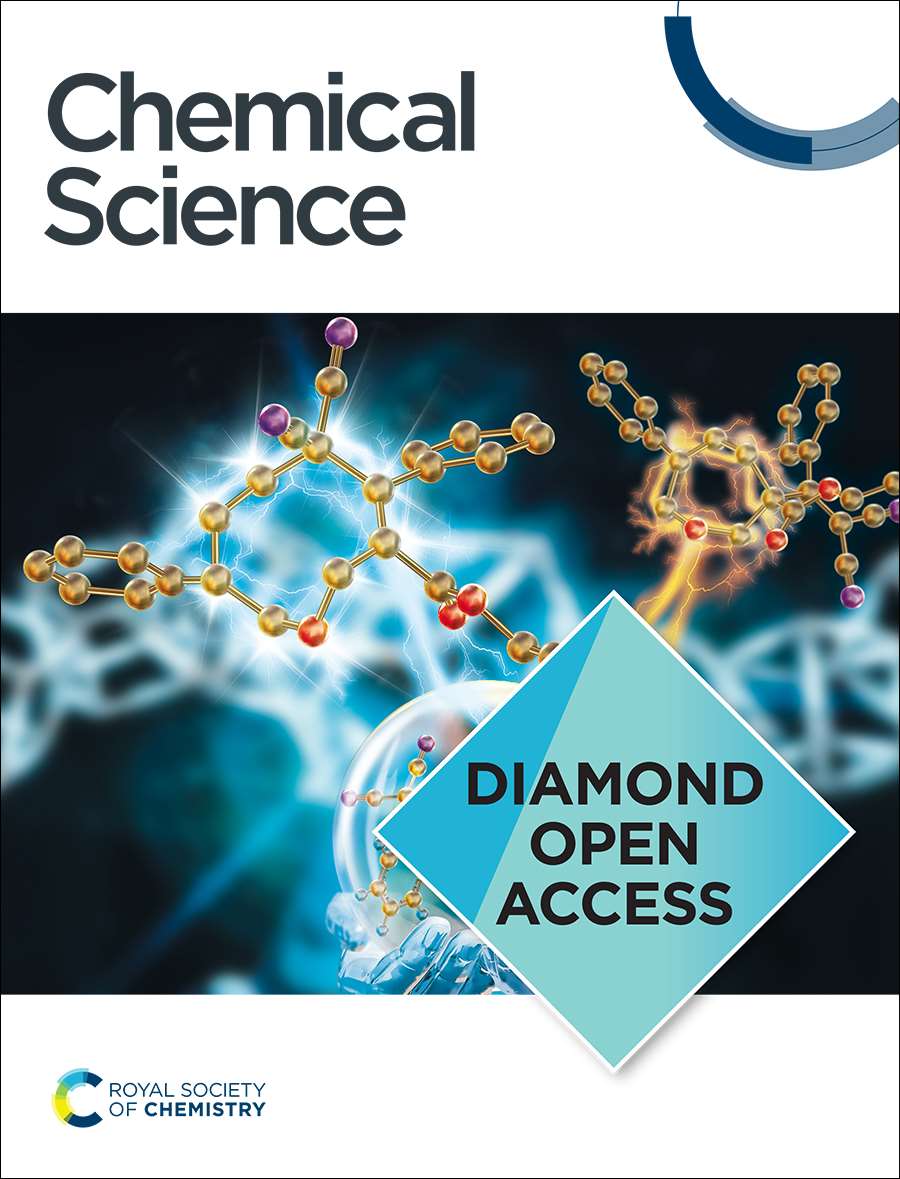金属-芳烃相互作用下nnn -钳形铀支架的C−C键切割和羰基化
IF 7.4
1区 化学
Q1 CHEMISTRY, MULTIDISCIPLINARY
引用次数: 0
摘要
金属-芳烃配合物最近在f元素化学中引起了越来越多的兴趣,但是由铀-芳烃相互作用介导的芳烃功能化仅限于一个例子。在这里,我们报道了一种新的铀-联苯配合物,由一个庞大的刚性三阴离子nnn -钳形配体支撑,其中铀-芳烯相互作用能够促进C - C键的断裂和在温和条件下与CO的功能化,从而产生u结合的9-芴酮。在联苯存在下,用KC8还原U(IV)-钳形配合物[NNN-U(THF)Cl2K(THF)3]2(1),得到末端芳烃配合物[NNN-U(THF)(联苯)][K(THF)5](3)。3的DFT研究表明存在两个未配对电子位于铀中心,与一个U(IV)和一个联苯dianion一致。配合物3经过联苯配体的羧基-羧基键断裂,得到[NNN-U(THF)(2,2'-联苯)][K(THF)2](4)。DFT研究表明,由于联苯dianion与铀的相互作用,在应变的四元环上发生协同开环反应,产4,而铀中心保持+IV氧化态。配合物4容易将CO插入到U - Caryl键中,然后形成Caryl - Ccarbonyl键,生成[NNN-U(THF)2(芴酮)][K(THF)4](5)。这项工作证明了铀-芳烃相互作用促进芳烃活化和功能化的潜力本文章由计算机程序翻译,如有差异,请以英文原文为准。
C−C Bond Cleavage and Carbonylation Enabled by an NNN-Pincer Uranium Scaffold via Metal-Arene Interaction
Metal-arene complexes have recently attracted an increasing interest in f-element chemistry, but the functionalization of arenes mediated by uranium-arene interactions is limited to a single example. Here, we report a new uranium-biphenylene complex supported by a bulky rigid trianionic NNN-pincer ligand in which the uranium-arene interaction is able to promote C−C bond cleavage and functionalization with CO under mild conditions to yield a U-bound 9-fluorenone. Reduction of the U(IV)-pincer complex [NNN-U(THF)Cl2K(THF)3]2 (1) with KC8, in the presence of biphenylene, results in the terminal arene complex [NNN-U(THF)(biphenylene)][K(THF)5] (3). DFT studies of 3 indicate the presence of two unpaired electrons located at the uranium center, in line with a U(IV) and a biphenylene dianion. Complex 3 undergoes Caryl−Caryl bond cleavage of the biphenylene ligand, affording [NNN-U(THF)(2,2'-biphenyl)][K(THF)2] (4). DFT studies indicated that, due to the interaction between the biphenylene dianion and the uranium, a concerted ring opening reaction can occur on the strained four members ring to yield 4 while the uranium center retains a +IV oxidation state. Complex 4 undergoes facile CO insertion into the U−Caryl bond, followed by the Caryl−Ccarbonyl bond formation, yielding [NNN-U(THF)2(fluorenone)][K(THF)4] (5). This work demonstrates the potentials of uranium-arene interactions to promote arene activation and functionalization
求助全文
通过发布文献求助,成功后即可免费获取论文全文。
去求助
来源期刊

Chemical Science
CHEMISTRY, MULTIDISCIPLINARY-
CiteScore
14.40
自引率
4.80%
发文量
1352
审稿时长
2.1 months
期刊介绍:
Chemical Science is a journal that encompasses various disciplines within the chemical sciences. Its scope includes publishing ground-breaking research with significant implications for its respective field, as well as appealing to a wider audience in related areas. To be considered for publication, articles must showcase innovative and original advances in their field of study and be presented in a manner that is understandable to scientists from diverse backgrounds. However, the journal generally does not publish highly specialized research.
 求助内容:
求助内容: 应助结果提醒方式:
应助结果提醒方式:


